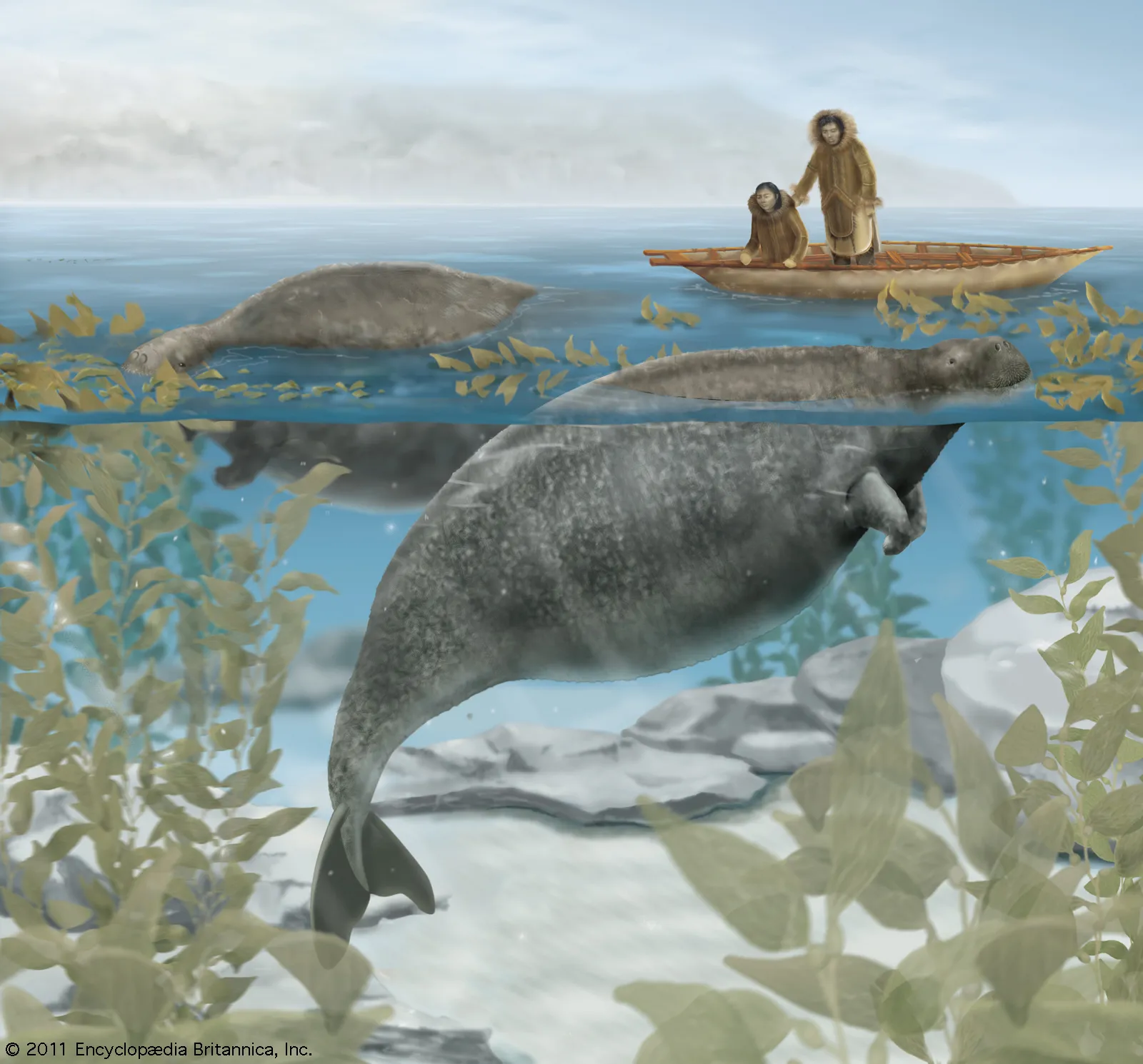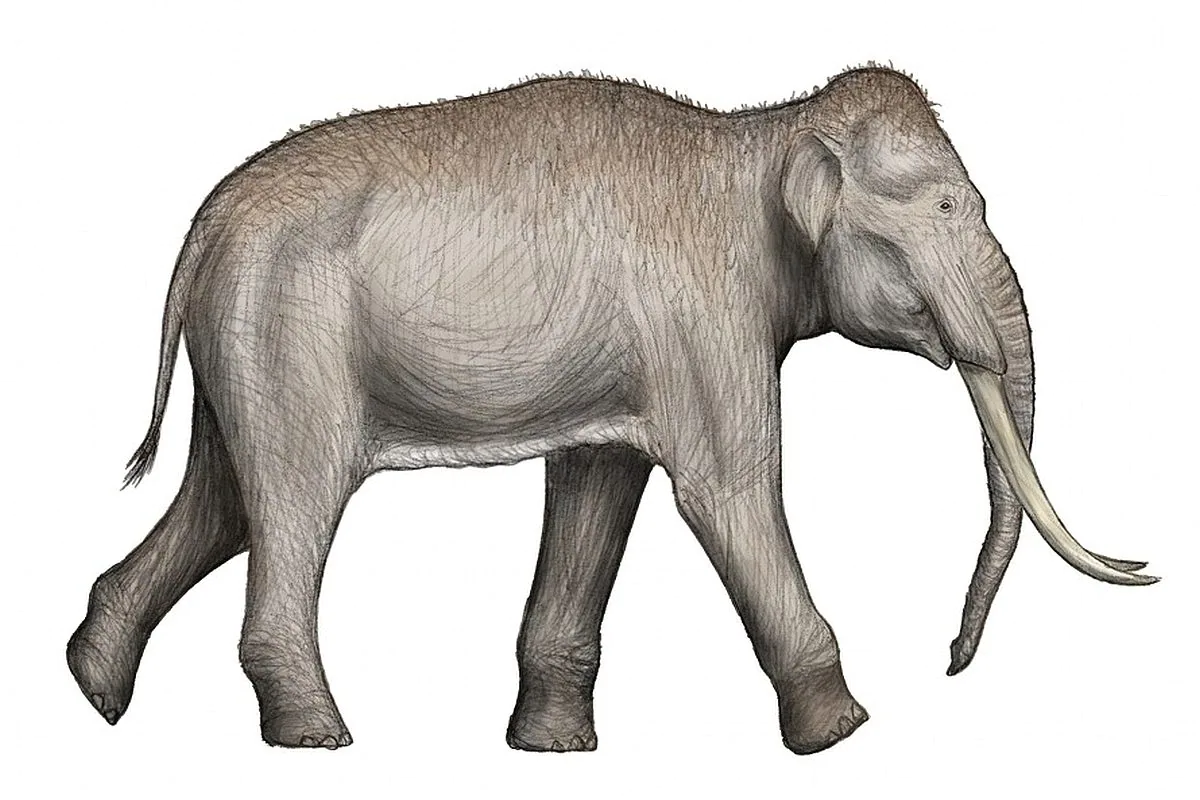Rediscovering Steller’s Sea Cow: Giants of the Kelp Forests
Introduction:
Steller’s Sea Cow, scientifically known as Hydrodamalis gigas, was a massive marine mammal that once thrived in the cold waters of the North Pacific, particularly around the Commander Islands. Named after the naturalist Georg Wilhelm Steller, who first described them in 1741, these gentle giants were related to manatees and dugongs. Their extinction in 1768, less than 30 years after their discovery by Europeans, underscores the destructive impact of human activities. The overhunting for their meat and hide by fur traders led to their rapid disappearance, highlighting the fragility of marine ecosystems.
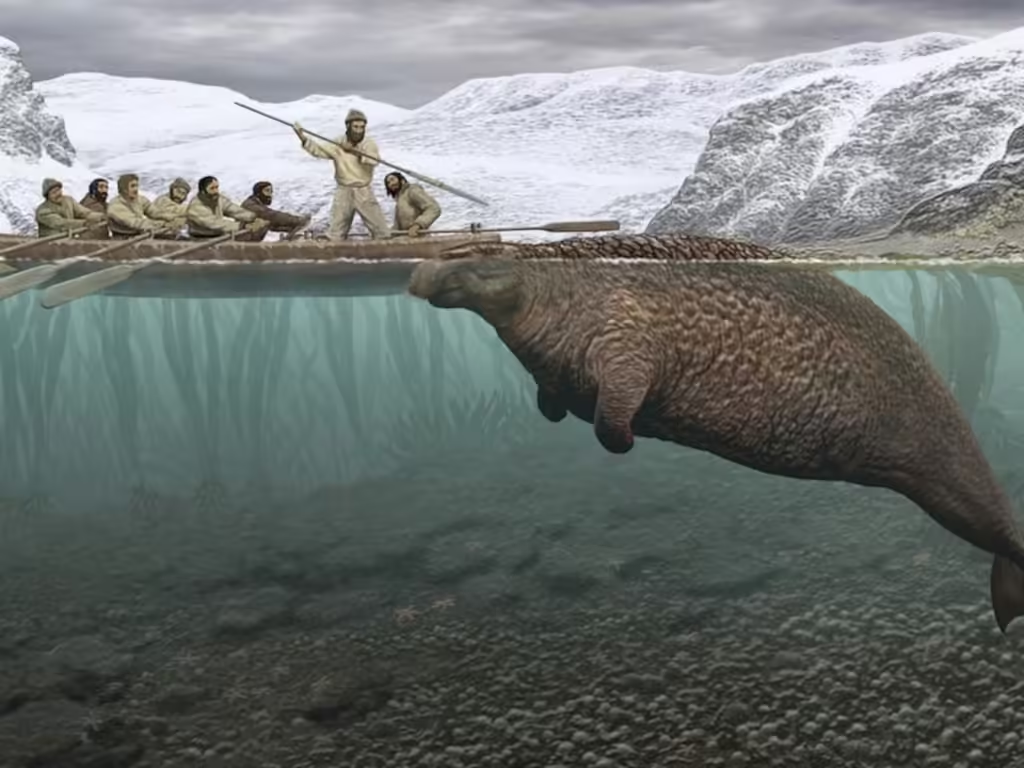
Facts:
| Attribute | Details |
|---|---|
| Scientific Name | Hydrodamalis gigas |
| Common Names | Steller’s Sea Cow |
| Year Declared Extinct | 1768 |
| Kingdom | Animalia |
| Phylum | Chordata |
| Class | Mammalia |
| Order | Sirenia |
| Family | Dugongidae |
| Genus | Hydrodamalis |
| Species | H. gigas |
| Natural History and Origin | Native to the North Pacific, particularly near the Commander Islands |
| Physical Information | Up to 10 meters long, weighing up to 10 tonnes |
| Appearance | Large, elongated body with thick, bark-like skin; no dorsal fin |
| Scientist Names | Described by Georg Wilhelm Steller |
| Region | North Pacific Ocean, Commander Islands |
Appearance:
Steller’s Sea Cow was an enormous marine mammal, reaching lengths of up to 10 meters and weighing as much as 10 tonnes. Its body was robust and elongated, more akin to that of a whale than its smaller relatives, the manatees and dugongs. The skin was thick and rough, resembling the bark of a tree, providing insulation against the cold waters of its habitat.
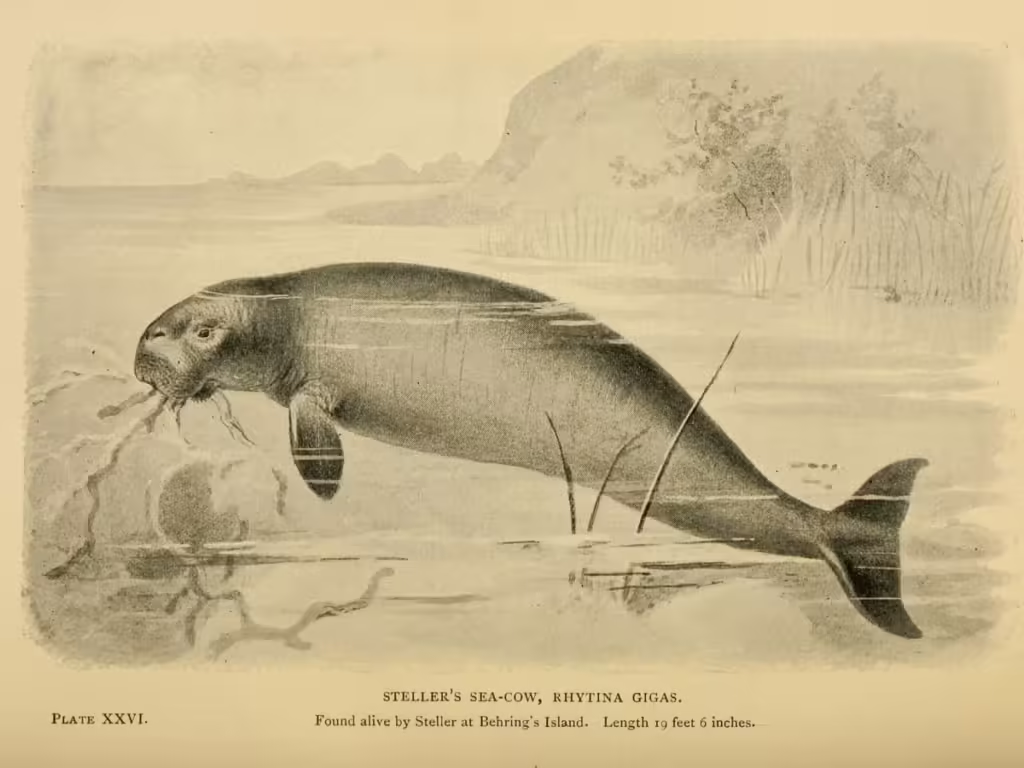
Distribution:
Originally found throughout the North Pacific, Steller’s Sea Cow’s range had dramatically reduced to just the vicinity of the Commander Islands at the time of European contact. These shallow, kelp-rich waters provided the ideal feeding grounds for these herbivorous giants.
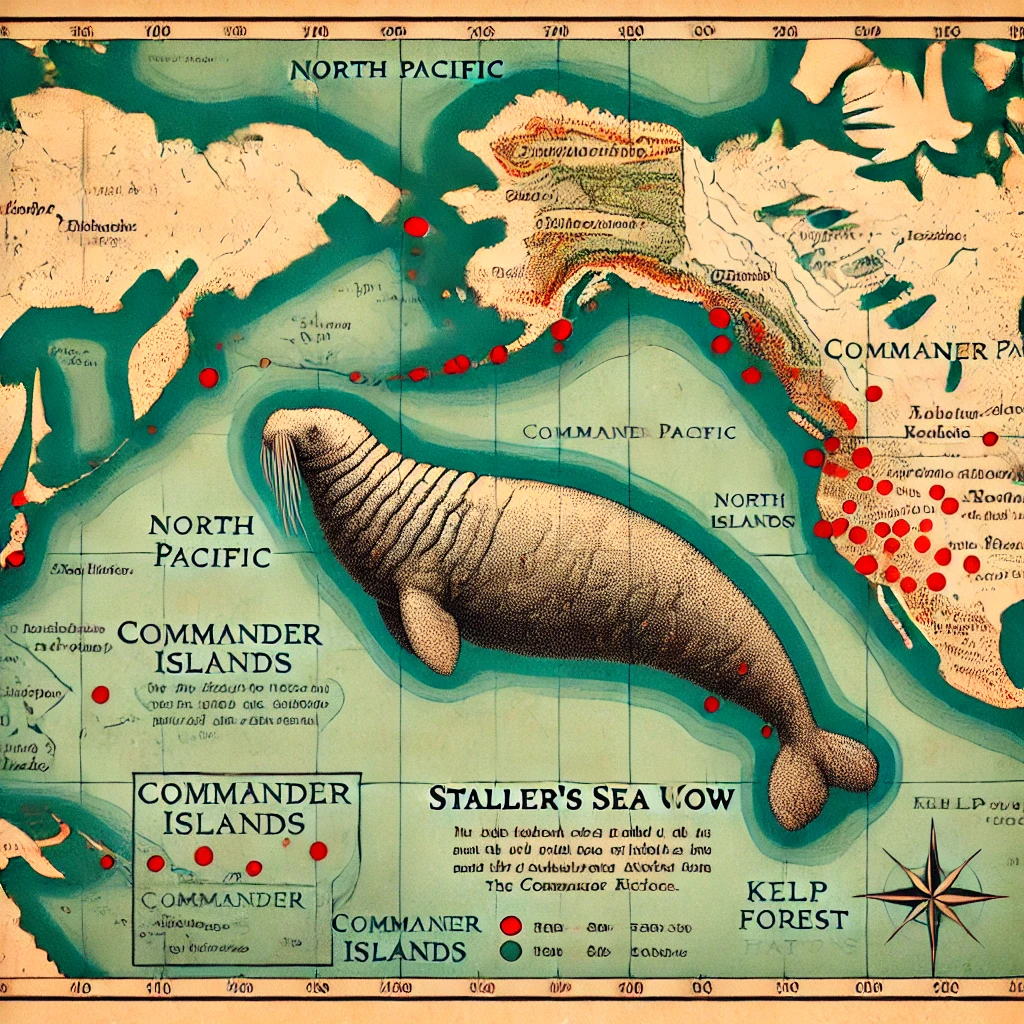
Habits and Lifestyle:
Steller’s Sea Cow was a slow-moving, docile animal, primarily feeding on kelp and other marine vegetation. Its feeding habits, which involved grazing on large amounts of seaweed, made it a keystone species in its ecosystem, helping to maintain the health of the kelp forests.
Physical Characteristics:
This sea cow was characterized by its lack of a dorsal fin and its paddle-like flippers, which aided in maneuvering through the water and scraping kelp off rocks. The eyes were small and the snout was blunt, with bristly whiskers around the mouth.
Diet and Nutrition:
The diet consisted entirely of marine vegetation, primarily kelp. Steller’s Sea Cow would use its strong lips to pull seaweed from the ocean floor, consuming up to several hundred kilograms of kelp daily.
Behavior:
Despite its enormous size, Steller’s Sea Cow was remarkably gentle and passive, showing no aggression even when approached by humans. They lived in small family groups, often seen floating on the water’s surface, which made them easy targets for hunters.
Cause of Extinction:
The rapid extinction of Steller’s Sea Cow was primarily due to overhunting by European explorers and fur traders, who valued the animal for its meat, fat, and hide. Its inability to escape quickly from hunters, combined with its restricted distribution around the Commander Islands, led to its quick demise.
FAQs:
| Question | Answer |
|---|---|
| What led to the extinction of Steller’s Sea Cow? | Overhunting for its meat and hide. |
| When was the last Steller’s Sea Cow observed? | The last known individuals were reported in 1768. |
| What did Steller’s Sea Cow eat? | It fed almost exclusively on kelp. |
| Why is Steller’s Sea Cow significant in marine biology? | Its extinction highlights the impact of human exploitation on marine species. |

Steller’s Sea Cow, Hydrodamalis gigas, marine mammal extinction, overhunting, North Pacific wildlife, Commander Islands, kelp forests, Sirenia, dugongid, marine conservation, ecological impact, Georg Steller, 18th-century explorations, manatee relatives, kelp diet, marine herbivores, historical extinctions, vulnerable marine species, conservation lessons, human impacts on oceans.
Categories:
- Extinct Marine Mammals
- Historical Wildlife Extinctions
- Conservation Lessons
- Marine Ecosystems
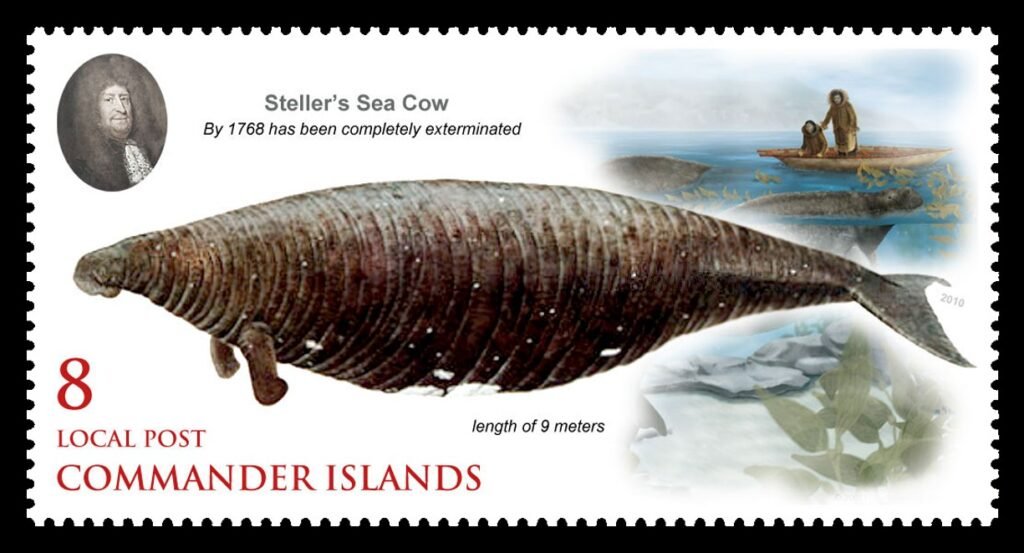
Views: 15
